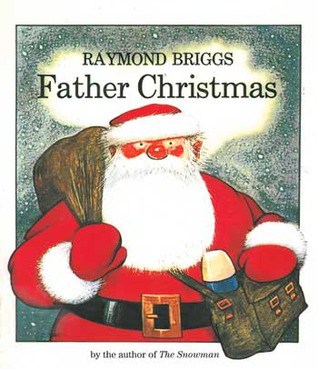Some say that the very first British graphic novel was True Love (1981) by Posy Simmonds. Others would say it was Father Christmas by Raymond Briggs.
This month I wrote a post on Teaching Kids How To Structure A Story. Earlier in the month I looked at a wordless picture book, The Snowman by Raymond Briggs. Today I continue with a selection of mentor texts to help kids see how it works. Let’s look closely at Father Christmas, a seasonal picture book by the same author-illustrator. It’s not Christmas here, but it’s never wintry at Christmas Down Under. I prefer to read wintry books in our actual winter. This is just as much a winter tale as it is a Christmas one. Father Christmas is also a very British tale. You’ll soon see why.
At first glance, this picture book also seems to break the main rules of storytelling. It works because it is short. Father Christmas is partly making use of a comedic structure rather than classic dramatic structure.
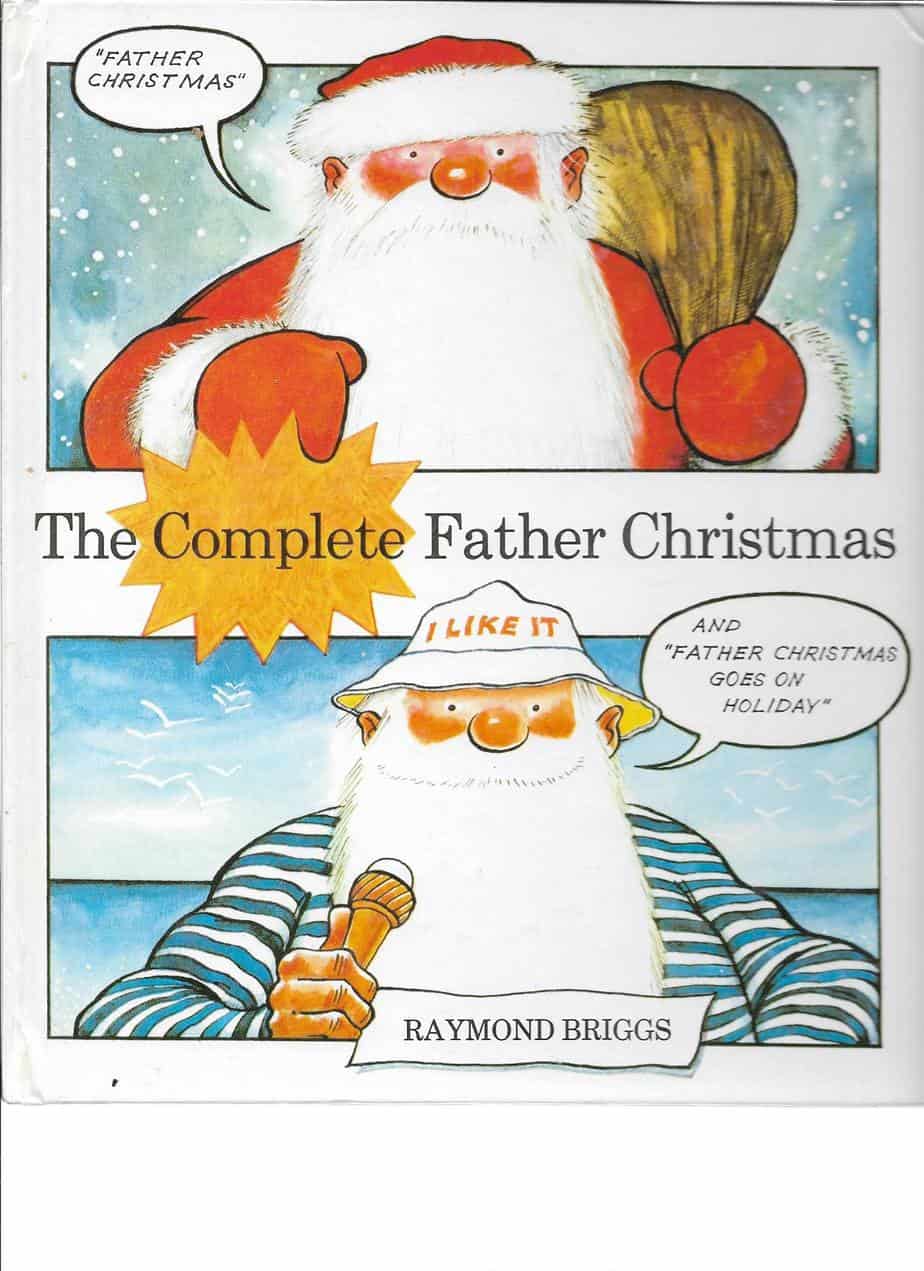
STORY STRUCTURE OF FATHER CHRISTMAS
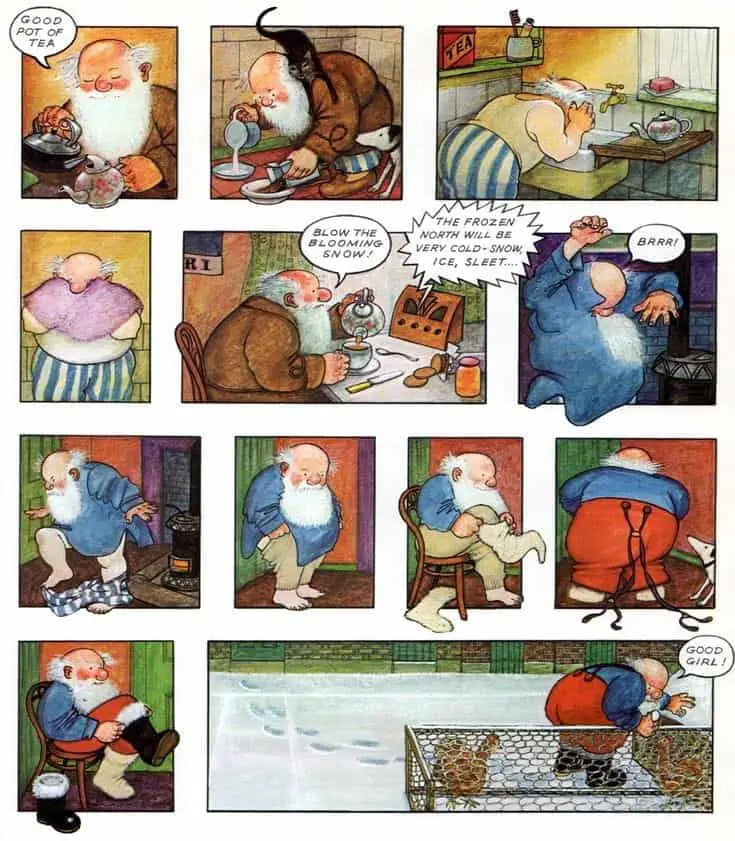
WHO IS THE MAIN CHARACTER?
Father Christmas.
What’s wrong with him?
Sometimes the foreign translations of a picture book give you extra clues about the story. The Japanese title means ‘Father Christmas The Cold-blooded Creature’ (or ‘Person who feels the cold easily’). The Japanese publishers put the thing that’s wrong with him right there in the title. More specifically, this is his shortcoming. He doesn’t like the cold. But I’d say his shortcoming is a little different.This is not your usual Jolly Santa, the guy most kids are exposed to — the man who lives to give. This Father Christmas’s shortcoming is that he’s grumpy by nature. Or is it really a shortcoming? Is he really that grumpy?
This is a comment on a specific cultural milieu — this old man is proficient in the art of grumbling. He is cranky as a matter of habit, not because he has all that much to complain about. This is grumbling almost as a mantra to self, a reminded that although things may be terrible now, they may get better later. Father Christmas is grumbling to no one in particular, but he is drawing us in with his grumbling. We are invited to grumble along with him as a form of phatic communion. At the end of the story he has broken the fourth wall by directly addressing the reader, so we know we were supposed to hear him grumbling. He was inviting us to feel the cold with him, creating the weather as the mutual enemy to bring two characters (him and us) closer together.
This feels very British to me.
WHAT DOES FATHER CHRISTMAS WANT?
Father Christmas wakes up dreaming of a summer beach so we know right away that he wants to be on holiday somewhere. Sure enough, in another book in the series, Raymond Briggs takes him off on holiday. I haven’t read that one, though I’ve no doubt he grumbles about everything while on holiday, too.
OPPONENT/MONSTER/BADDIE/ENEMY/FRENEMY
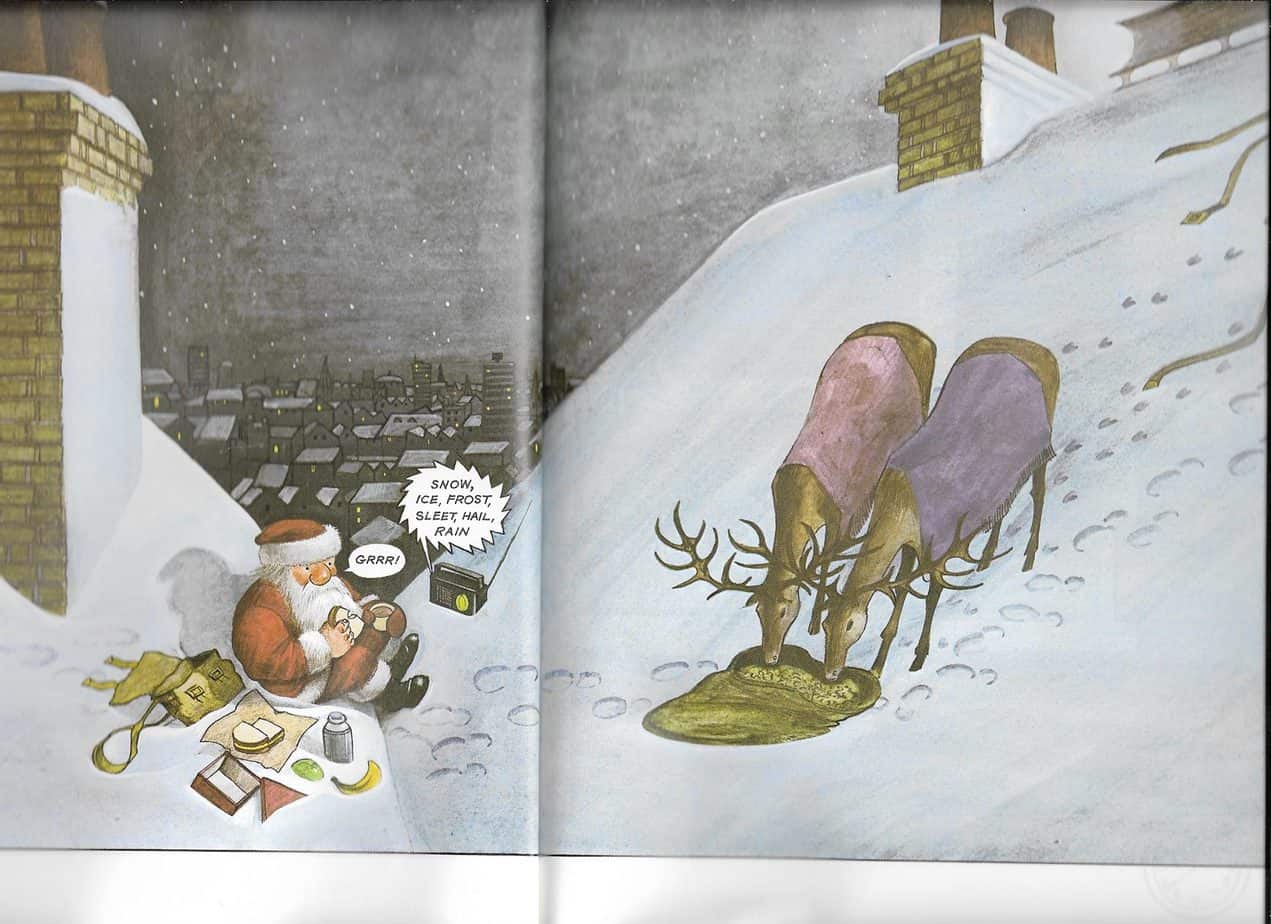
His opponent is the cold weather. Father Christmas expends a lot of energy just keeping warm — tending to the fire, looking after the animals (who can’t be out in the elements), filling his belly with hot cups of tea.
WHAT’S THE PLAN?
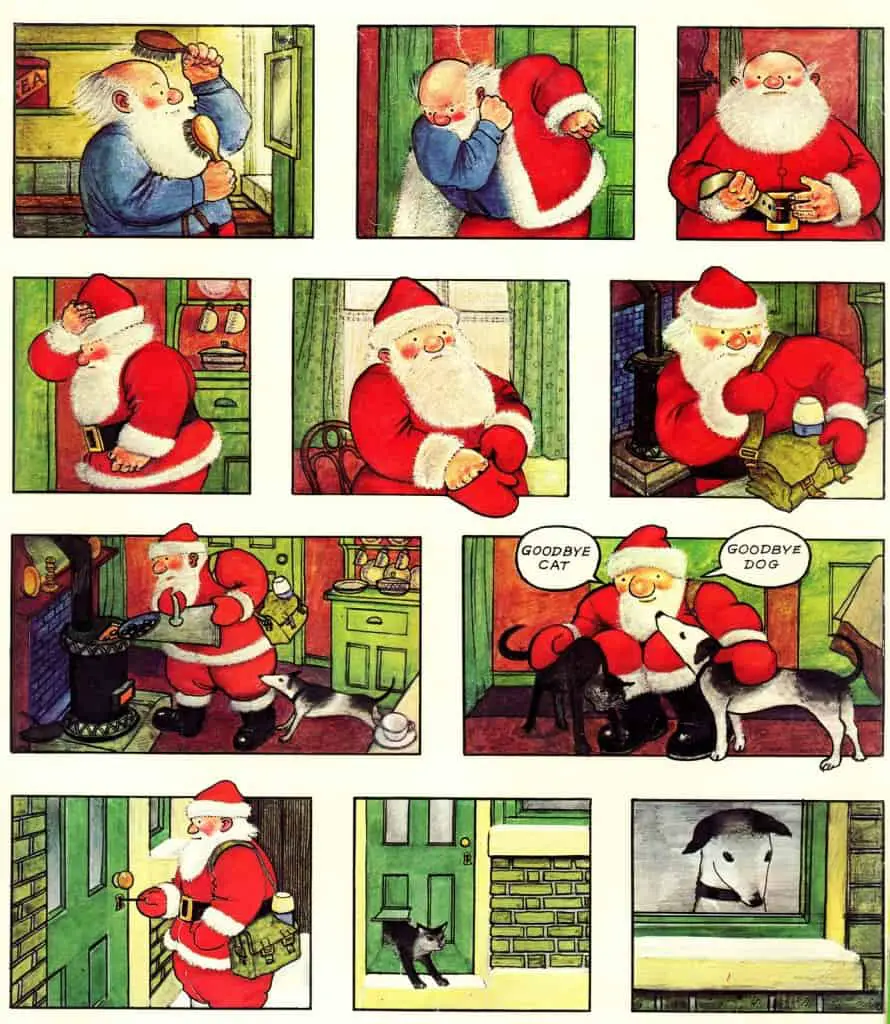
We already know what Father Christmas does at Christmas time because this is a well-known cultural narrative. He delivers presents to children all around the world. We watch him do this, but Raymond Briggs’ new spin on it: Father Christmas considers this work, just like anyone else doing shift work on a freezing cold night would feel like they are doing work.
BIG STRUGGLE
As you can see already, this is another mythic structure, in which the main character goes on a journey. This is not your classic mythic structure, however. Father Christmas is a modified version of that — known as a home-away-home story. A character leaves home, has an adventure, then returns home again. This home-away-home story usually takes place over a single day, and the child (or childlike) character usually goes to sleep at the end.
In general, a series of minor big struggles end in a big one. But sometimes, when there’s no fight or argument or near-death experience, the story includes something that stands-in for a big struggle.
In Diary of a Wombat, Jackie French used the ‘accumulation’ technique, where several objects pile up/come together.
Raymond Briggs uses a variation on that. After visiting a number of ordinary houses to deliver presents, including a caravan which he has trouble getting into, Father Christmas visits the Palace of Westminster, presumably to deliver presents to the most important children in the land. We have an accumulation effect going on, but it isn’t a piling up of objects. Instead, it goes from ‘ordinary to extraordinary’, or ‘ordinary to grand’. This stands in for the big struggle scene, which exists to let us know the journey is coming to an end.
WHAT DOES FATHER CHRISTMAS LEARN?
Nothing. Because this story is comedic, not dramatic. Father Christmas is the ultimate recurring character. He appears year after year and never changes. Therefore it makes sense if he doesn’t change. It also makes sense if he’s a bit grumpy about that. Which is the gag.
However, the story still works as a complete story. Why?
In lieu of a character arc, in which Father Christmas learns something, we see Father Christmas on an emotional arc. When Santa gets up he’s grumpy because there’s so much work ahead of him. But over the course of his day he overcomes many small hardships, stopping in between to enjoy his snacks. Finally at the end he is happy to be home, but before bed he’s unhappy again, because he knows he’ll have to do it all again next year. The unrelenting nature of work would appeal to adults more than to children, I’m guessing. This story therefore appeals to a dual audience. Young readers also know what it’s like to do something they don’t want to do, and everyone (in most parts of the world) knows what it feels like to be uncomfortably cold.
HOW WILL LIFE BE DIFFERENT FROM NOW ON?
It won’t, but Father Christmas is home safe in bed, which is enough to close the story on. It’s not original, but it works, time and time again.
FURTHER NOTES ON THE STORY STRUCTURE
Did you pick up the main ways in which this story is not typical dramatic structure?
- The only opponent is the weather. Usually there is a human opponent, or a monster as well.
- The main character doesn’t learn anything.
- His life won’t be any different from before. He’s basically an automaton.
This is because the story is a comedy. Here’s the thing about comedic structure: It only sustains its audience for 5-10 minutes before we tire of it. That’s why comedic structure can work in picture books. They’re short. When Father Christmas was adapted into a short film, and by short I mean over 20 minutes, the script writers wisely decided to combine two of Raymond Briggs’ Father Christmas books. There is simply not enough in this picture book to sustain 20 minutes’ worth of entertainment.
